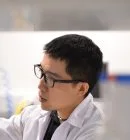
On Earth Day 2024, we ask: how can technology combat climate change?
Ahead of Earth Day we asked 34 leaders, across a myriad of industries and professional backgrounds, for their take on the role technology must play if we are to avoid catastrophic climate change.
Their responses make for a caleidoscope of sorts, highlighting how carbon-decreasing initiatives can – and must – come from all sectors.
Below is a compilation of those responses, starting with that of Lucy Klinkenberg-Matthews, Head of ESG at Paragon, who sums up the matter perfectly.
Earth Day serves as a powerful reminder of our responsibility to protect and preserve our planet. Technology plays a crucial role in promoting environmental stewardship, but it’s important for tech industry leaders to recognise that this growth also poses a risk to our environment.
The ICT industry is responsible for 5% of all carbon emissions. It consumed 6% of global energy in 2020, the same as air travel before the pandemic. The use of digital and associated ICT is growing by approximately 11% per year, with over eight million data centres worldwide consuming as much energy as 32 million UK homes in 2019.
Despite these challenges, digital transformation and its supporting technology are undoubtedly a force for good. It allows us to connect, engage, educate, and adapt. However, we must acknowledge the environmental and social impact that the digital world and the ICT industry have. We need to ensure that while we use technology to drive positive change and reduce our own carbon emissions, we are also addressing its upstream and downstream impact to avoid contributing to global issues elsewhere in the value chain.

Businesses must shift their mindset and adopt technologies that optimise operations and minimise waste. By embracing innovation, we can develop solutions that reduce our ecological footprint and promote a greener future. This aim can be achieved through advanced analytics, automation and energy-efficient processes that reduce resource consumption. Investing in renewable energy sources is also crucial in helping us become carbon neutral.
Technology also empowers us to raise awareness and educate others about sustainability. Leveraging digital platforms means we can engage with customers, partners and communities, fostering a shared commitment to environmental consciousness. By utilising data-driven insights, we can empower individuals and organisations to make informed decisions that positively impact the planet.
Embracing technology not only enables us to make better decisions based on real-time data; it also allows us to develop innovative solutions to address environmental challenges. Advanced data analytics and machine learning algorithms can optimise operations and streamline processes, leading to significant reductions in waste and resource consumption. By integrating renewable energy sources with smart grids and “Internet of Things” devices, we can enable more efficient energy management and reduce greenhouse gas emissions.
As leaders in the tech industry, it is crucial for us to actively recognise and address both the risks and opportunities that technology brings, ensuring a sustainable and greener future for all.
— Lucy Klinkenberg-Matthews, Head of ESG at Paragon
Note: Scroll down below or click on each name to read their quote.
Table of contents

Annalee Bloomfield, CEO of Sustain.Life
From precision farming that minimizes waste to solar panels generating clean power, sustainability hinges on technology’s ability to optimize resources and accelerate the clean energy transition. For businesses coming to terms with their climate impact – the old adage holds true: you can’t manage what you don’t measure. Good technology is crucial to helping companies navigate the alphabet soup of climate compliance, ensuring that they can measure, report, and reduce their emissions effectively, and bring sustainability to the core of their business.

Dr Stephen Chua, Research Assistant Professor, Principal Investigator, Earth Observatory of Singapore, Nanyang Technological University
Technology is a double-edged sword – it contributed to the existential threat of human-induced climate change but also holds the power to save humanity. The reason why our combined efforts at mitigating climate change seem ineffective is because global efforts are insufficiently strategic or optimised. Artificial intelligence technology, coupled with fundamental research, can produce accurate digital earth/country/city twins for effective visualisation and communication, help identify causal environmental impacts from local to global scales and ultimately redirect finite resources toward best outcomes. The ancient saying “scientia ipsa potentia est” or “knowledge itself is power” is never more true today.

Dr Paige Marie Morse, Industry Director at Aspen Technology
Post-COP28, more than 200 nations signed an agreement calling for an accelerated energy transition that includes tripling global renewable capacity and doubling energy efficiency by 2030. Technology is central to achieving these goals, as it improves operational efficiency, reduces carbon footprint and enables faster deployment of green energy. Digital technologies – the Internet of Things (IoT), cloud technologies, machine learning and artificial intelligence (AI) in particular – are transforming the way the world produces and consumes energy. The implementation of these capabilities to cut current emissions and speed the development of new energies will be necessary to meet this demanding pledge.

Kieran Crawford, Group Sales Director at TXO
Growth and innovation really don’t have to come at the cost of the environment.
The circular economy represents a shift from the linear model of ‘take, make, dispose’ to a more sustainable approach focused on reducing waste, reusing resources and recycling materials. For the telecom industry, where we’re ever-more embedded into operator sustainability strategies, this means finding ways to extend the life of network equipment through those avenues.
As regulatory pressures and demand for eco-friendly practices rise, companies should recognise the circular economy as both a positive cost-saving and revenue-generating opportunity.

Paul Scott, CTO at Matrix Booking
Technology is pivotal in creating a sustainable future, and the effective use of data plays a crucial role in this process. Decisions informed by reliable data will have the biggest impact on efforts to reduce emissions and improve energy efficiency.
For example, when comparing data on what was planned to happen with what actually happened, in real-time and historically, we open the door to immediate, impactful changes. With the right technology coupled with reliable data, organisations can right-size their estate and actively manage how their buildings are being used, when and by whom, integrating this into smarter building systems to control heating, air conditioning and lighting.
We must commit to expanding the role technology plays as we work towards a greener, more sustainable future.

Craig Chapman, Chairman, KNX National Group Australia
Technology is important to help automate the decision-making processes required to best manage applications like room temperature control and air quality, lighting control, room occupancy control, energy management for appliances and devices, like electric vehicle chargers, and solar generation utilisation. Technology should intuitively function in the background to automate controls for optimal occupancy conditions. Using technology to address the contrast between maintaining optimal occupancy conditions and the use of resource inputs, such as energy and water, can provide the most positive effect. An example within a home is the use of automation technology to best manage solar-generated energy versus grid-purchased energy. Within a commercial or public building, automation technology can be used to best maintain optimal occupancy conditions for temperature, air quality and lighting, based on room and area occupancy detection.

Stephane Marouani, Country Manager ANZ at MathWorks
Combating climate change necessitates societal shifts and technological innovation, notably through AI and Control Systems, vital for sustainability. AI deciphers climate trends from vast datasets, improving agricultural efficiency, resource conservation, and reducing food waste. It also enhances electricity management via smart grids, aligning energy production with demand dynamically. Control Systems have wide applications, from renewable energy to electric vehicles and smart infrastructure. However, the intensive data and computing power required for AI and climate research emphasise the need for sustainable machine learning practices, ensuring technological development harmonises with eco-friendly power usage.

Veronica Lai, Chief Corporate and Sustainability Officer, StarHub
Technology is the driving force powering businesses. It is also the accelerator for sustainable solutions – reducing our reliance on fossil fuels, enabling the adoption of low-carbon green tech, and fuelling the exploration of alternate clean energy such as hydrogen and conversion of carbon captured.

Martin Huber, CEO and Co-Founder of Amrax
On this Earth Day, I’m excited about the transformative role technology is playing in building a more sustainable future. Advancements in design and visualisation tools, particularly AI-powered 3D modelling, are empowering the AEC industry to prioritise sustainability. These tools provide unprecedented insights into building efficiency, allowing for significant reductions in energy consumption during design, construction, and operation. This not only benefits the environment but also offers substantial cost savings. The future holds even greater promise, with the potential for AI to generate optimal building designs and ‘living buildings’ that adapt in real-time for maximum efficiency. Technology is key to unlocking a more sustainable built environment.

Simon Yeoman, CEO at Fasthosts
Most businesses don’t fully grasp sustainability. Not because they don’t care, but because they simply don’t know where to start. This often leads to half-measures and quick fixes like carbon offsetting, which barely scratches the surface in terms of environmental impact. True sustainability demands continuous effort and a thoughtful integration of technology.
For instance, many businesses see cloud computing as a greener alternative, but this is true only if the cloud services are sustainably managed. That’s why it’s crucial for businesses to consistently assess and challenge their tech providers, ensuring their technology is part of a genuine sustainability strategy.

Nichol Ng, Co-Founder of The Food Bank Singapore
There are many technologies that make going sustainable easier but just like the early days of tech, there is plenty of profiteering from this phenomenon. Reports, certifications and innovations have just made sustainability a pricey affair, which drives products and solutions further out of reach from the common man. Sustainability was something to be embarked on for the betterment of all humanity and Mother Earth. Yet, doing right and doing good has become more complicated than it should be.

Angel Benito, CTO at Zartis
The path to sustainable growth is unequivocally intertwined with technological advancement, particularly through Artificial Intelligence (AI). As we stand on the brink of transformative changes across all industries, I’m expecting the most profound impacts within sectors which are fundamental to the sustenance of our future: food and water, energy, and transport.
In the agriculture industry, AI is set to revolutionise sustainable resource management, enabling precision agriculture that optimises water use, enhances crop yields, and minimises environmental impacts. AI can support the cultivation of meat in labs, reducing the need for livestock farming – a major contributor to greenhouse gas emissions, deforestation, and water usage. This strategic application of technology ensures food security while conserving vital resources.

Tommy Gibbons, CIO and Co-Founder of Hempitecture
A human being without technology will live sustainability but will not live very long or well. Living long, well, and sustainably requires evaluating each technology for its impact and resource stream. Technologies depending on petrochemicals are liable to become obsolete whereas carbon-free technologies many of which are biogenic, will become valuable.

Meri Lillia Mullins, Director of Global Accounts at Biome Makers
The narrative that agriculture is a threat to the environment is being rewritten by technology. Technology is not just supporting sustainability; it’s accelerating it. Soil health platforms, for example, are a prime example of how technology is improving sustainability through real data.

Kai Öistämö, President and CEO of Vaisala
In the face of the current environmental challenge, there’s an urgent need for decisive measures. Whether it’s about understanding, mitigating, and adapting to climate change, industrial and environmental measurement data plays a crucial role in enabling climate action.

Graham Meller, Founder of Buttonwood Marketing
Firstly, we would not be able to track and forecast global warming and increasing CO2 levels without appropriate technologies. Secondly, action to fight the climate emergency demands accurate, reliable data (from measurement technologies), so that, for example, countries can identify opportunities for reducing greenhouse gas (GHG) emissions, and then monitor the effects of mitigation measures.
Most governments are frantically searching for opportunities to lower their GHG emissions, and many of the opportunities that they are looking to exploit depend upon new technologies. Battery technology and electric vehicles, for example, offer the opportunity to decarbonise transport. However, governments may struggle to achieve their Net Zero emissions without help from industry and more specifically technology.

Adelle Desouza, Founder of HireHigher
I think it goes without saying, that technology and innovation must meet the sustainability targets and goals we as a planet – not just the Data Centre industry – need to hit.
I do wonder whether our industry at times gets the raw deal of the technology vs sustainability conversation. On one hand, you have the boom in data not showing any signs of slowing down and that is something society has come to expect, but the technology required to support the boom is often chastised for existing.
However, the industry is working hard to meet sustainability goals that come from today’s innovation, and I do see movement there.

Dom Baker, Head of Innovation at CDS, part of Bailie Group
Hardwiring measurement and validation is a key part of continuous improvement in sustainable business, and now that carbon reduction plans are mandatory, everyone from innovators, technologists, and designers need to ensure that what they’re developing inherently includes more considered metrics in this area. To this end, they must think about how processes such as system thinking and CX ensure awareness and consideration of all the critical elements involved in meeting both regulatory and ethical obligations.

Rob King, Co-Founder and CEO of Zedify
We have almost all the technology we need to tackle climate change, but the challenge is how we scale it quickly enough to get the reduction in emissions we need in time to prevent catastrophic impact.
Advances in AI and machine learning are helping sustainability startups scale operations at pace and will play an increasingly important role in reducing the sizeable chunk of UK emissions arising from transport.

Ellen McCormack, Head of Europe at Watershed
The private sector has an essential role to play in addressing climate change, but many companies with climate targets are far from meeting their goals. Technology can help direct their efforts and accelerate decarbonisation—for example, by using software to build granular emissions measurements, engage scope 3 suppliers, and forecast reduction pathways. Companies will also soon have to comply with regulations like the EU’s CSRD, which demands unprecedented amounts of corporate sustainability data. Software helps to streamline the reporting process, leaving sustainability teams free to focus on reducing environmental impact.

Richard Hartley, CEO and Co-Founder of Cytora
Climate change threatens insurance affordability with Swiss Re predicting that climate risks will add $183bn to property insurance premiums by 2040. Increasing premiums means that insurance coverage will become less affordable for businesses and consumers alike and make it harder and more expensive to take risks.
Addressing this problem is one of the biggest challenges for the insurance industry today. However, Generative AI is accelerating a path to a future where risk can flow from insureds to financial markets at a much lower frictional cost which is a way to offset higher premiums driven by increased levels of risk. By streamlining processes and enabling scarce underwriting judgments to scale across much higher volumes of risk, AI-native risk workflows create the capacity for insurers to cover more risks at lower costs.
While tackling climate change remains absolutely crucial, AI can help the insurance industry adapt and protect our future

Sarah Whitfield, CMO at Covatic
The technology industry has the power to transform the global environment with the invention and production of sustainable alternatives to everyday functions. But it also has the potential to do huge damage and deplete the Earth’s resources even further, if the companies involved aren’t committed to reducing their carbon footprint.
In the advertising technology industry specifically, there has been a huge shift towards sustainability, largely driven by consumer expectations. While there is still a way to go, it is reassuring to see businesses taking steps to explore green alternatives – both independently and through initiatives like the B Corp Certification.

Rob Sewell, Co-Founder and CEO, SmartFrame Technologies
The tech industry is all about creating bigger and better solutions – but this doesn’t always take environmental impact into account. The quest for convenience has driven up energy use; digital technologies currently account for 2-4% of greenhouse gas emissions across Europe.
Adopting a ‘less is more’ mindset is a crucial next step for all businesses choosing a tech solution. This is particularly true for the media and advertising ecosystem where simple considerations, including reducing unnecessary data storage and transfers, adopting sustainable cloud infrastructures, and prioritising quality over quantity in ad delivery, can have a considerable impact on overall emissions.

Ava Moran, SVP at Azerion
As an industry, it’s crucial to consider the different sources of CO2 emissions within our digital marketing efforts. Only then can we strategize ways to cut down and offset our carbon footprint.
Businesses integrating CO2 measurement solutions throughout the entire campaign operation will be leading the way in this endeavour. These solutions can examine various campaign parameters such as duration, format, target market, and creative weight to estimate CO2 emissions. They also offer optimization recommendations for future campaigns by cross-referencing this data with performance analyses.
In addition, businesses can generate excess emissions by going through multiple partners in a tech stack, creating a lengthy chain of dependencies that reduces their efficiency. Those working with a full-stack partner can avoid this, delivering significant improvements in sustainability and productivity.

Alex Collmer, CEO at Vidmob
By Earth Day 2025, we need to reach a better balance amidst this content abundance. Alongside harnessing the flexibility intelligent technology brings, industry players must refine the focus of their testing efforts with creative data and write more informed prompts. This will help curb unnecessary ad iterations and reduce waste by ensuring resources are allocated to those assets that are most likely to perform.”
As Gen AI holds the industry hot seat, more advertisers are considering its impact on sustainability, as well as efficiency. Major brands have spent the past year leveraging smart tools to enable on-the-fly development — building and testing dozens of ad iterations to determine which creative direction works best. But while the production cost of uninformed hyper-scale experimentation is low, it’s evident that the wastage of ineffective advertising and energy consumption is coming at a high environmental price.

Noelle Runo, Marketing Manager Northern Region, Making Science
Whether it be using digital tools to sign documents instead of using paper, or empowering employees to take greener transportation means to get around, every company should be looking to pledge themselves to solid targets to fight climate change. At a macro level, companies can also commit to carbon measurement and reduction, or pledge support to nonprofits. Technology is vital to every company’s sustainability journey, but it is only the enabler; it is the collective human effort that will truly drive decarbonisation.

Eric Whitley, Director of Industrial Transformation at L2L
With the industrial sector accounting for nearly 30% of U.S. greenhouse gas emissions, developing sustainable practices is critical. To reduce environmental impact and meet increasingly strict EHS requirements, the right technology can help manufacturers determine where to boost their investments in resource-efficient production processes. Reducing carbon emissions, promoting circular economy principles, partnering with clean energy suppliers, and improving process efficiency will be central to manufacturers’ sustainability focus moving forward.
We predict that 2024 will showcase more plants incorporating robotics, AI, sustainable packaging, and recycling initiatives into production processes to address the growing need for more sustainable practices

Rajeev Shrivastava, Founder and CEO at VisitorsCoverage
We must act to reduce our carbon footprint and safeguard destinations for future generations. Technology enables us to champion green initiatives, provide eco-friendly options, and foster responsible travel. Travel tech companies play a crucial role in raising awareness, educating, and promoting sustainable tourism. By combining sustainable practices with innovative technology, we can create a brighter, healthier future for all.

Laura Evans, Director, Environmental Social & Governance (ESG) at Cirba Solutions
In pursuit of a sustainable future, innovation is not a choice but a necessity. Technology allows us to embrace circularity. Battery recycling technologies, for instance, recover critical minerals from end-of-life batteries, drastically reducing our reliance on virgin mining. A move toward electric transportation is critical in mitigating climate change, however mining the metals to manufacture batteries that power clean energy comes at an environmental cost. Battery recycling technologies lessen our reliance on virgin mining, significantly reducing the negative impact of battery manufacturing.

Tom Baroch, Sr. Director, Global Partnerships at Outrider
Today’s global movement of goods is a carbon-heavy industry, requiring innovation and technology to reduce its environmental impact. Beyond delays and shortages, the global supply chain’s substantial contribution to greenhouse gas emissions can be addressed by the rapid deployment of automation and electrification technologies. Inefficient yard operations and delays in last-mile delivery force truck drivers to idle in distribution yards, exacerbating their carbon emissions and environmental impact. Automation and electrification of these yards fosters efficient freight movement and reduces emissions. The implementation of these technologies will result in a sustainable and secure supply chain for future generations.

Katy Reynolds, CEO & Co-Founder, Shibusa Systems
Technology integrations into homebuilding processes accelerate construction and advance sustainability goals by reducing environmental impact and resource consumption and increasing lifetime value. Consequently, a tech-informed approach ensures a greener future for housing while meeting the demands of modern construction practices.

Benjamin Bell, Senior Director at TIER Mobility
We cannot tackle climate change at scale without harnessing technology. Advanced technologies enable cleaner energy sources like solar and wind power, effective carbon capture and storage, and energy-efficient appliances, vehicles, buildings, and industrial processes. It is also important to leverage satellite imagery, remote sensing, and IoT devices for comprehensive monitoring and analysis of environmental changes.
Yet technology can only do so much. Habits also need to change, from using more sustainable modes of transport to cutting food waste. We can all look at our daily routines and ask ourselves what more can be done for a greener planet.

René Haas, Co-Founder of NeoCarbon GmbH
The CO2 concentration has risen by 50% in the last 150 years, resulting in an average temperature increase of 1.3 °C. To reach net zero by 2050, it will be essential to capture CO2 from the atmosphere on a large scale (and at a low cost). Direct Air Capture (DAC) technologies are currently too expensive and too slow to scale – innovative solutions are urgently required.
Recommended reading: Bias in AI: what 200 images of people at work reveal
NEXT UP

Ryan Beal, CEO & Co-Founder of SentientSports: “Sports generate some of the richest datasets globally”
We interview Ryan Beal, CEO & Co-Founder of SentientSports, a startup using AI in fan engagement and athlete protection on social media.

Paris 2024: The greenest games ever
How the Paris 2024 Olympic Gamers organisers have lived up to their promise that this is the greenest Olympics ever

Salesforce, Workday team up to launch AI employee service agent
Salesforce and Workday have marked their new strategic partnership with the launch of an AI-powered assistant to handle employee queries.
